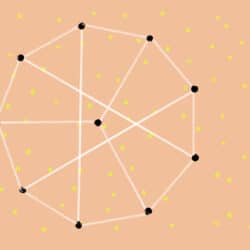Introduction
When my child died I thought that no one could understand how it felt It was only when I started attending a self-help group with other people in the same situation that I could really start to feel able to cope.
I had been looking after my husband who has Alzheimer’s disease for three years at home. I was feeling increasingly angry at his behaviour and then guilty about losing my temper. Meeting regularly with other people in the same situation gave me some perspective as well as some practical solutions to care-giving problems.
As a single mother raising two young children, I often felt close to despair having to deal with so many overwhelming child-rearing problems and my own feelings as well. Belonging to a self-help group has made me feel that I’m in control of my life and I’ve even been able to help other single moms.
As the above examples illustrate, self-help/mutual aid occurs when the helper and the person being helped share the same problem or concern. The sharing experience benefits both the person being helped and the helper.
Most of the time, mutual aid occurs in the form of self-help/mutual aid groups, which are voluntary non-profit groups run by, and for, their own members. The primacy focus is mutual support. Group members come together to provide emotional support and mutual assistance for a life-disrupting problem or stressful condition, but these groups are also open to members of the general public who share their concerns. Professionals may participate at the request of the group but are expected to remain in an ancillary or consultant role. There is no charge for participating in a self-help group, although a nominal donation to cover expenses is sometimes requested.
Self-help organizations are not new. The first one is still probably the best-known group-Alcoholics Anonymous (AA). It was started in 1935 by two alcoholics who found that mutual aid helped them to control their addiction to alcohol. Today AA is a world-wide program with membership in the millions.
Another pioneer, Recovery Inc., was formed in 1937 to prevent relapses among mentally ill persons. Although started by a neuropsychiatrist (Dr. Abraham Low), the group eventually became totally member-directed.
Background In the 1960s and 1970s the self-help movement grew and flourished throughout the world. Health and Welfare Canada reported in 1976 that there were several million members in half a million groups across North America.1 This growth was also occurring in Western European countries, South America, Eastern Europe, and Australia. In Canada today, according to Hector Balthazar of the Canadian Council on Social Development, there are estimated to be about 1,000,000 people who are members of self-help/mutual aid groups. Mutual aid is perhaps the most visible and fastest growing form of organized social support.
Self-Help Clearing Houses Self-help clearing houses are an innovative aspect of the growing mutualaid movement. The regional World Health Organization (WHO) office for Europe met in Copenhagen in 1980 to focus on self-help. One of its recommendations was the development of clearing houses to collect and disseminate information on self-help; provide resources and facilities to self-help groups; support and assist individual groups; and develop policies and practices at national levels. Clearing houses now serve over 30 communities and regions in the United States and an International Network of Mutual Help Centres has been formed.
The Self-Help Clearing House of Metro Toronto is the first of its kind in Canada—a free-standing clearing house sponsored by Health and Welfare Canada through its National Welfare Grants. It facilitates the growth and development of self-help/mutual aid by increasing awareness of the existence and purpose of the various groups among both the general public and professionals and by providing assistance to the groups themselves. The Clearing House also responds actively to community development requests and helps to create new social networks for people coping with a wide range of problems. While it does not make grants itself, it may help new groups to find seed money.
The Self-Help Clearing House of Metro Toronto has identified over 230 different self-help organizations covering a wide range of concerns and stressful life situations, including addictions and compulsions, bereavement, parenting, separation and divorce, disabilities, physical and mental illness, sexuality, and employment There are groups for care givers, relatives and friends, as well as for those experiencing the various problems. As a rule, clearing houses are not merely umbrella organizations, and self-help groups do not need to be “members” to benefit from the listing, promotion and assistance of the clearing house.
Since opening in October 1987, Toronto’s Self-Help Clearing House has received over 2,500 requests for information and assistance from members of the general public, helping professionals, government representatives, and members of self-help/mutual aid groups.
Benefits of Mutual Aid
The impact of mutual aid can be assessed from two perspectives:
– impact on the individual members of the group
– impact on the whole community.
Mutual aid groups enable their members to take control of their lives, i.e., to move from feelings of helplessness and impotence to feelings of power which can result in positive action to solve problems and overcome difficulties arising from difficult life transitions or long-term physical or mental heath problems. Members are enabled not only to take charge of their own lives but to help others who are experiencing the same stresses. In this way, those initially in need of help become helpers themselves. In some cases, group members also become advocates for better community programs and services to meet the needs of those who share their difficulties.
In addition, group members exchange valuable and practical information about how to cope, where to find help, and how to find and employ community resources. Skills for problem solving and “using the system” are developed or enhanced.
Studies have shown that self-help/mutual aid groups have a beneficial impact on the community as a whole since they can provide a cost-effective complement to the professional health care and social service systems. Researchers in the fields of mental health, acute and chronic health problems, and stressful events or life transitions have reported that:
– the need for hospitalization is decreased
– the length of time in hospital is decreased
– physical symptoms are alleviated
– patient/physician relations are improved
– rehabilitation time is decreased.
In addition, members of self-help groups report increased feelings of self-esteem and self-worth and a more positive “quality of life”.2
Self-Help and Charity
People who found and run self-help groups generally do so not to benefit the community but to help themselves; the groups originate in a personal need more often than in the perception of someone else’s need, and mutual aid is their primary function. As a result, many are not registered as charities, few do significant fund raising and their expenses can usually be met by members themselves. Some are incorporated, but many operate at a less formal level quite satisfactorily. The low-key structure helps explain the usefulness of clearing houses which can put small groups in touch with a larger interested community.
Nevertheless, the community does benefit from the strength that participants provide to each other. For example, members are usually less reliant on public services as a result of their self-help activities. The groups may also be the focus of attention of charitable organizations devoted to the relief of particular problems or conditions. Self-help groups may be affiliated with larger organizations that are themselves charitable. The Clearing House of Metro Toronto, which is itself a charity, will include a group in its list only if the group practices self-help, though it is also interested in knowing of resources available for the primary groups.
Self-help groups may do research but most do not. More engage in advocacy on behalf of their members or those similarly afflicted. Because they are not charities their “political” activity is not restricted. However, much of the focus of the advocates is on public education about their situation and many do not “go public” in any way.
For the most part, then, self-help groups and traditional charities are on parallel paths, each serving the public and its members in different ways; however the possibilities for co-operation and contact are numerous. The two sectors do overlap in the Clearing House, which serves as a focus for investment in this relatively new and hopeful form of community development.
FOOTNOTES
1. Mutual Aid as a Mechanism for Health Promotion and Disease Prevention. A report to Health and Welfare Canada, November 1987.(Joy Rogers, Project Director).
2. Selected Highlights of Research on Effectiveness of Self-Help Groups. California
Self-Help Center, U.C.LA. (Compiled by Louis Medvene, Ph.D.).
LORI KOCIOL
Executive Director, Self-Help Clearing House of Metropolitan Toronto


